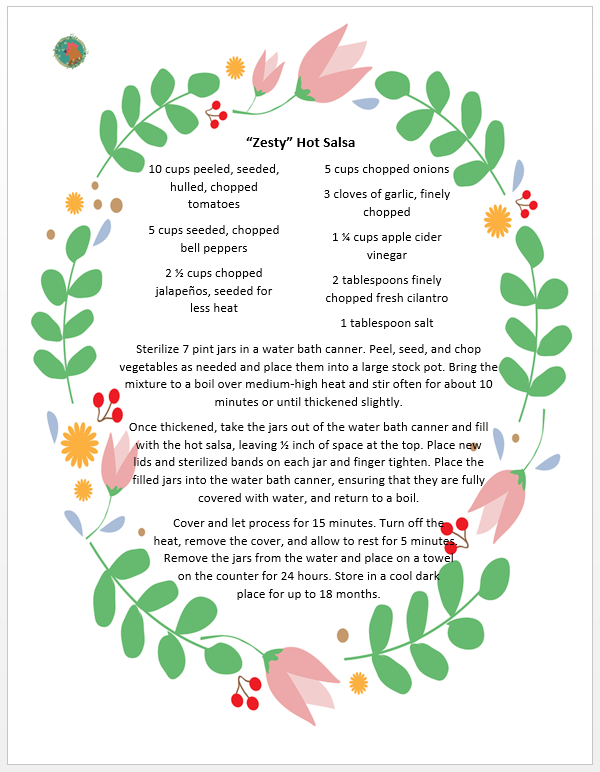We have had a serious problem with blossom end rot on our tomatoes this year. The spring started out lovely with rain and cool temperatures and then suddenly, the rain ended and the temperatures skyrocketed. We had 90° weather in June and no rain for over 3 weeks. Our water can’t be used for watering the garden because the pH is too high. We had rain barrels to water from but the water ran out quickly with such an extended period without rain so our plants had a rough start.
We treated our plants with Cal-Mag, a calcium-magnesium supplement and, now that we are getting rain again and the temperatures have leveled out, we are finally getting tomatoes without rot! Yesterday we got enough tomatoes to make salsa! I have been waiting all summer for those ripe red tomatoes and they’re finally here.
I found this recipe in the Ball Complete Book of Home Preservation. I use this book for all my large batch canning recipes. I have never made anything from this book that we didn’t love. This salsa recipe is called, “Zesty Salsa” but it is far spicier than I would expect for a “zesty” recipe…It’s downright HOT! But, that’s how my husband likes it so he is a happy guy!
To make 6-7 pints of salsa, you’ll need:
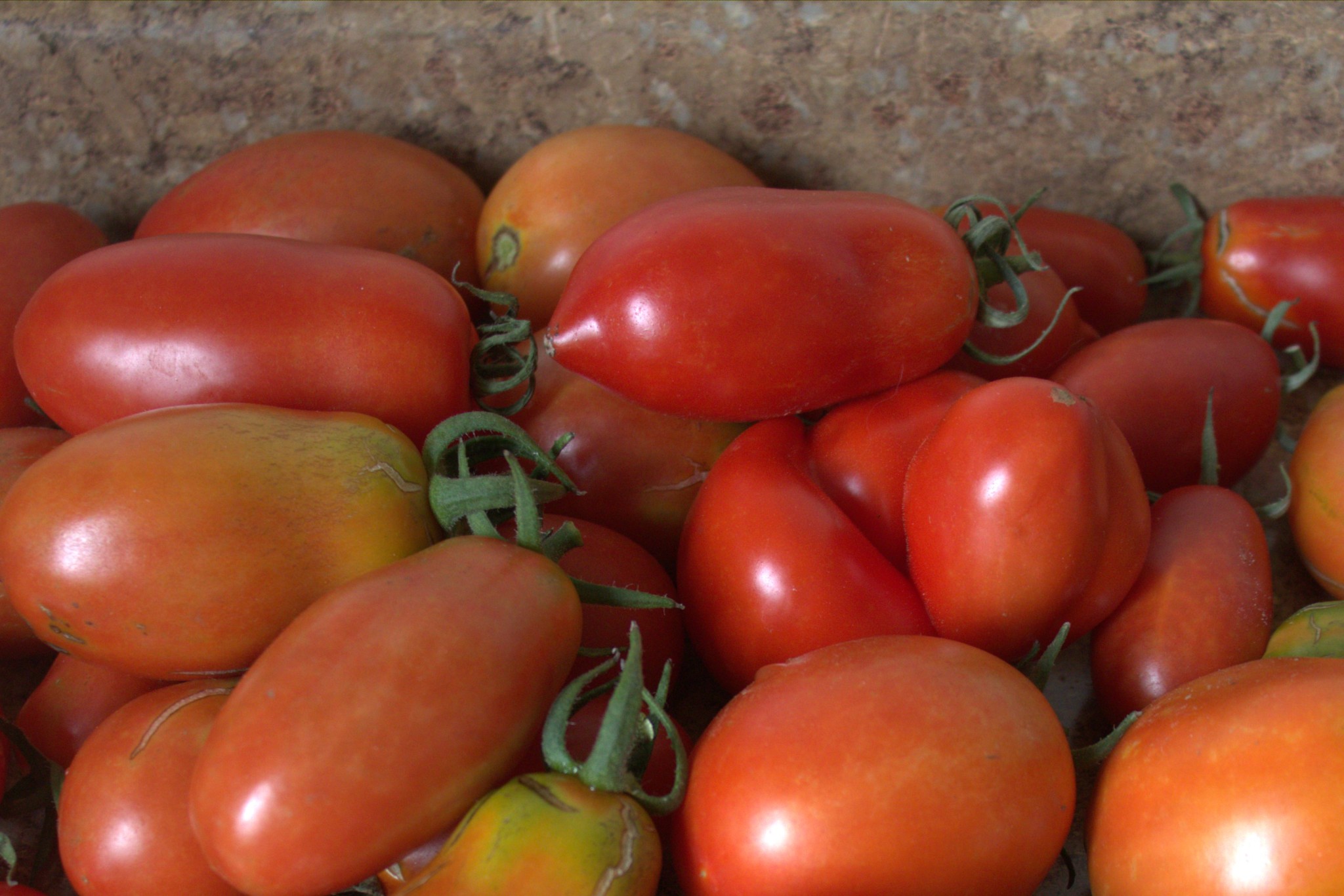
Tomatoes
You will need 10 cups of peeled, seeded, chopped tomatoes. You can get this amount from about 5 pounds of plum tomatoes or 3 1/2 to 4 pounds of slicing tomatoes. I used a combination of both types of tomatoes

Jalapeños
You can use any type of hot pepper. We grow jalapeños so that’s what I used. For more heat, leave the seeds in and to cut back the heat a bit, take the seeds out. I took the seeds out of half of the jalapeños in my batch. To get the 2 1/2 cups of chopped chili peppers you need, you should start with just over half a pound of jalapeños.
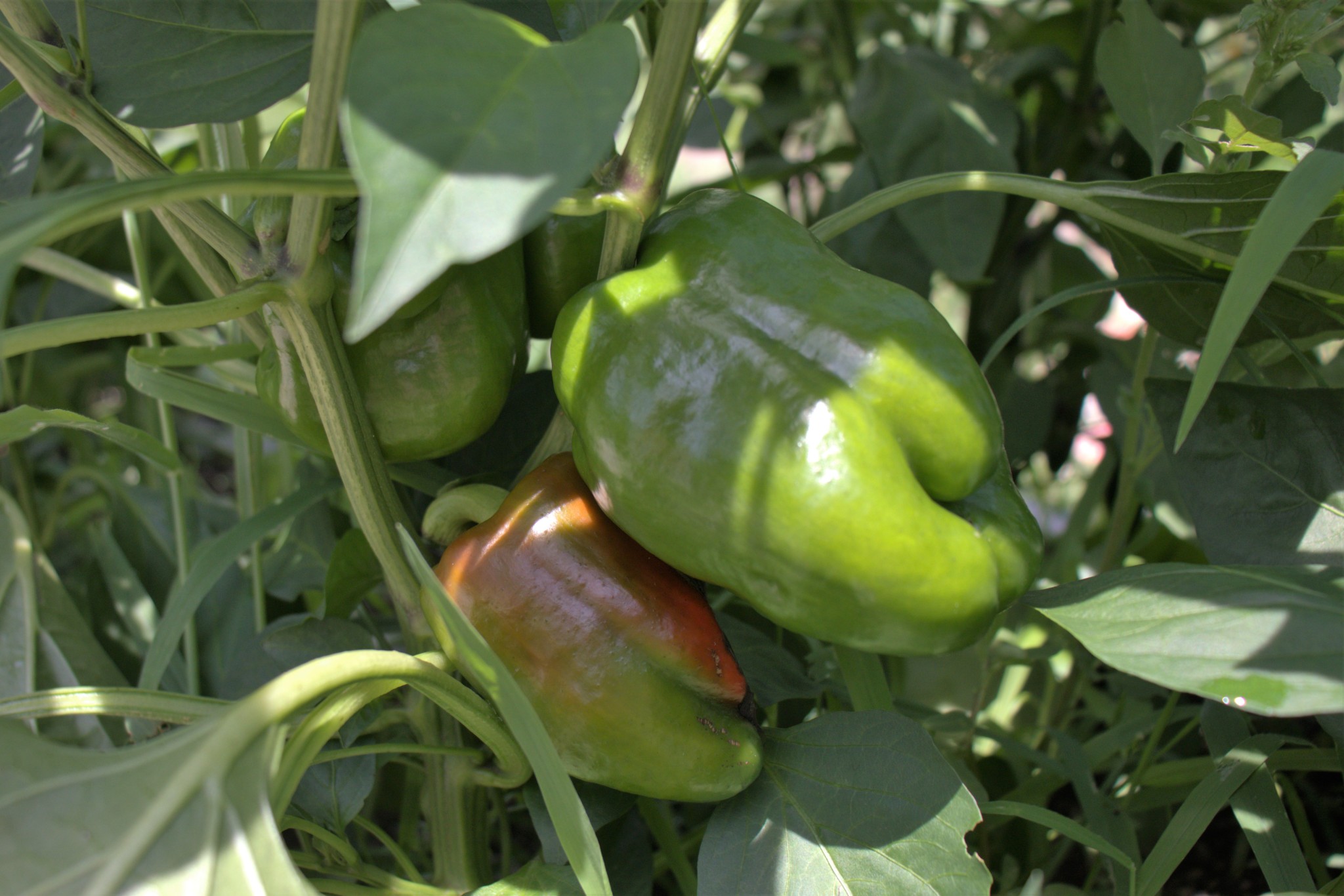
Bell Peppers
You can use any color bell pepper here. I used green because that’s what I had. Using red, orange, or yellow will add a bit of sweetness to your salsa. You will need 5 cups chopped, seeded bell peppers. You should get this from about 4 pounds of peppers.

Onions
I used a combination of yellow and red onions but you could use either one. You will need 5 cups of chopped onions which you can get from about 2 pounds of onions.

Apple Cider Vinegar
You will need 1 1/4 cups apple cider vinegar. You can use white vinegar here but apple cider vinegar will give a better flavor.

Fresh Cilantro
Nothing smells better than fresh chopped cilantro! You will need 2 tablespoons of finely chopped fresh cilantro.

Garlic
For this recipe you will need 3 cloves of garlic, finely chopped.

Salt
You could use any type of salt here but may need to adjust how much you use depending on which type you choose. I used table salt and needed 1 tablespoon.
Start by bringing your water bath canner to a boil with 7 pint jars and bands in it and boil them for 15 minutes to sterilize them. I do not boil my lids because I have found that this sometimes causes the lids to seal improperly. Instead, I dip them in boiling water briefly before topping off my jars. If you prefer to boil your lids with your jars, feel free. Just make sure to check your seals once you have let your jars of salsa rest on the counter for 24 hours.
While the jars are sterilizing, peel, chop, and seed as needed.
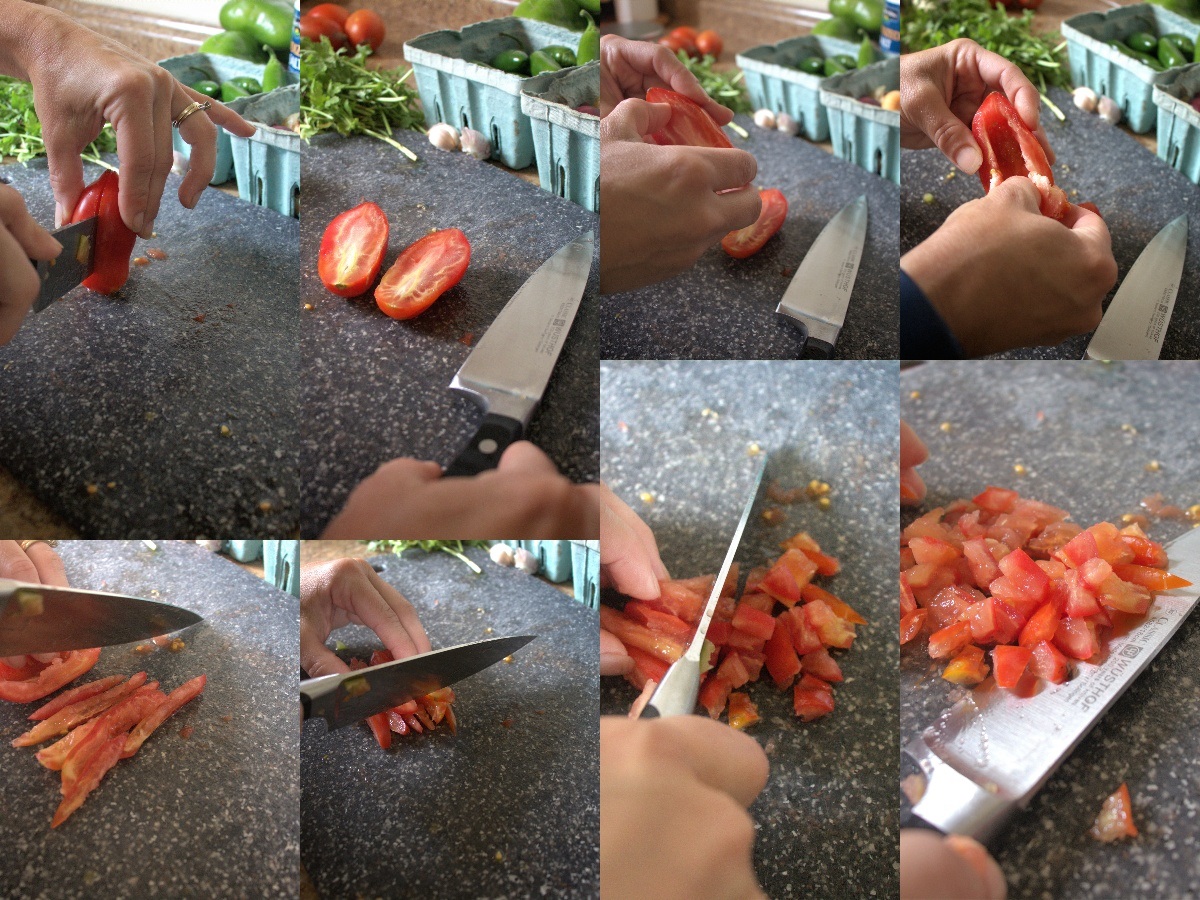
The easiest way to seed, hull, and chop a tomato: slice down the center and use your thumb to scrape the hull and seeds out. Then chop. Please ignore the fact that I forgot to peel them. To peel tomatoes, cut an X in the bottom of the tomato and dip it into hot water for about 30 seconds. The skin will start to peel away from the flesh at the X.
To quickly chop and onion, cut off the stem side of the onion and place it cut side down. Cut the onion in half through the root end. Make notches in the onion as wide as you want your pieces to be, making sure not to cut all the way to the root end. Turn the onion and slice, holding the root end.
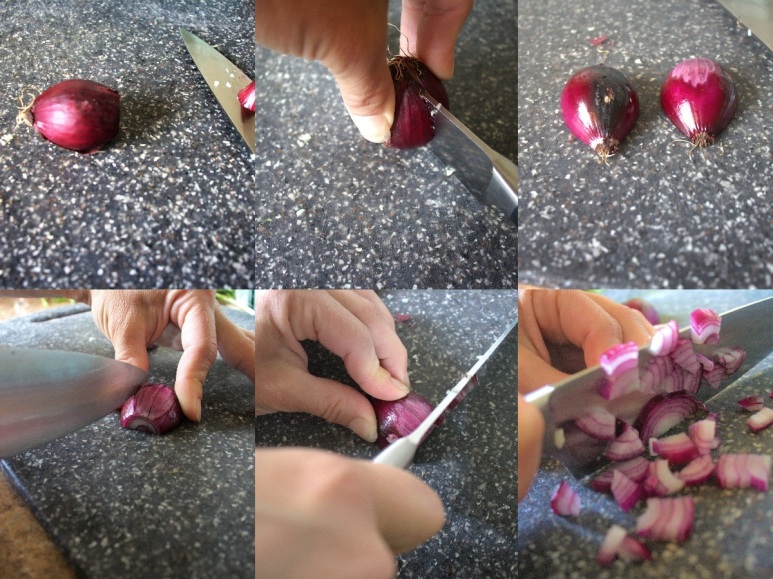
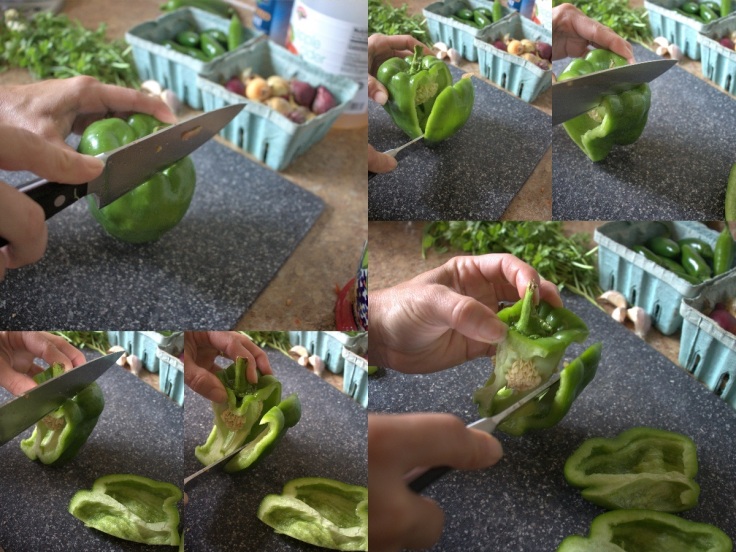
To quickly and easily seed a pepper, hold it upright and slice down each side, following the curve of the pepper.
Put all the ingredients into a large saucepan. If you would like a smoother salsa, you can pulse your salsa in a food processor or blender, or hit it with an immersion blender for a few seconds until it reaches your desired consistency. We like chunky salsa so I kept it as is. Heat the salsa to a boil over medium-high heat and boil, stirring often, for 10 minutes or until it thickens some.

Once your salsa is thickened, take the jars and bands out of the canner and fill the hot jars with the hot salsa leaving 1/2 inch of headspace. Wipe the rims clean and top with a lid and band, tightening to finger tight.
Place the jars on the rack in your water bath canner and lower into the water, ensuring that they are completely covered with water. When the water returns to a boil, cover and start your timer for 15 minutes.

After 15 minutes, remove the lid from the canner but do not remove the jars. After 5 minutes, remove the jars to a towel or pot holder on the counter and let them rest for 24 hours to seal.
When the 24 hour resting/sealing time is up, check the seal on your cans by removing the bands and trying to just barely raise the jars off the counter by holding the edges of the lid. If the seal is tight, they should lift. If the jar is not properly sealed, the lid will begin to lift. Any jar without a proper seal should be kept in the refrigerator and used within a couple of weeks. The sealed jars should be labeled with the date and can be kept in a cool, dark place for up to 18 months.

Like I said earlier, this is a spicy salsa. You can cut back on the spice by removing all the seeds from the jalapeños or by swapping out some of the jalapeños with green peppers. If you don’t want to alter the recipe but still want to cut back the heat on your dip, try my sour cream salsa dip. It’s amazing, simple, and the sour cream will kick back some of the spiciness of the salsa.
I sometimes post links to Amazon and other sites. Clicking and purchasing from these links helps support my blog, my homestead, and my family. If you are purchasing something you find on my blog, please consider using these links.
“Zesty” (Hot) Salsa
